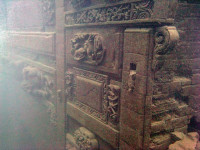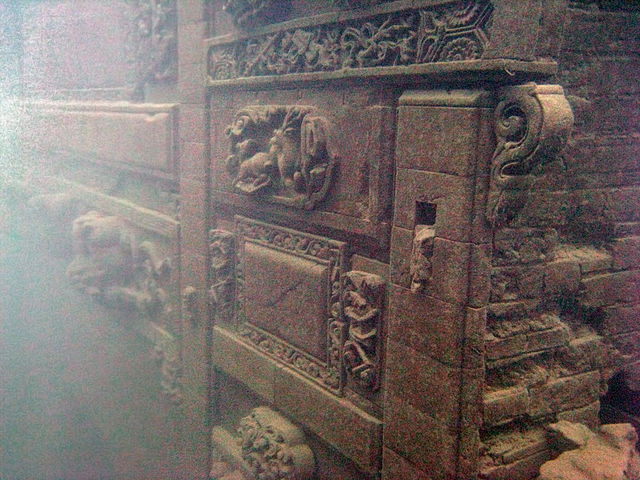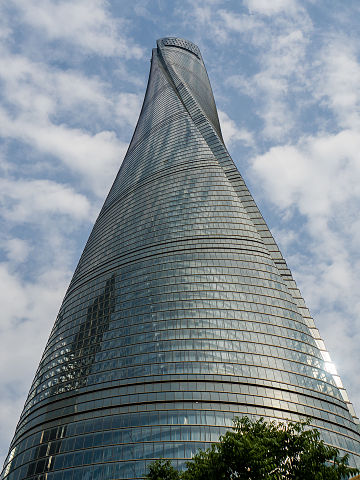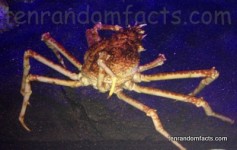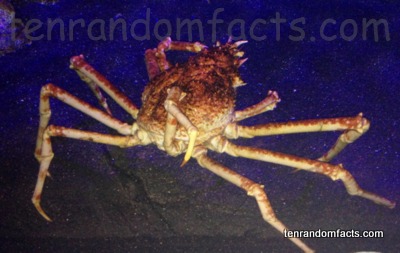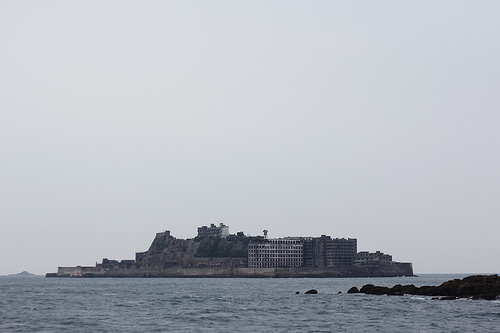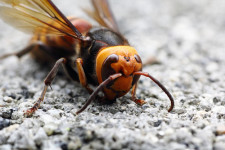
You’ll thank your lucky stars when you don’t aggravate an Asian giant hornet.
- Asian giant hornets are the largest extant species of hornet, and are native to the East Asian tropics.
- ‘Asian giant hornets’ are also known as ‘yak-killer hornets’ and ‘giant sparrow bees’.
- The scientific name of Asian giant hornets is Vespa mandarinia and it is from the family Vespidae, a family of wasps.
- The diet of Asian giant hornets consists primarily of beetles, as well as large insects including honey bees, as well as tree sap, honey and soft fruit, however, the adults are only able to consume liquid, though they chew solid food and feed it to their larvae.
- Asian giant hornets reach 3.5 to 5.5 centimetres (1.4 to 2.2 inches) in length and have a wingspan of 3.5 to 7.6 centimetres (1.4 to 3 inches); and they can devastate a hive of bees in six hours or less.
Asian Giant Hornet
Image courtesy of t-mizo/Flickr
- Asian giant hornets have a yellow to orange coloured head with a black to brown thorax, and a striped yellow/orange and black abdomen.
- It is common for Asian giant hornets to live and nest underground, often under large tree roots abandoned by a past animal, however the hornets can dig if need be.
- Asian giant hornets have a 6 millimetre long stinger (0.24 inch) that can painfully inject toxins that are potentially fatal if stung in succession, and they are said to cause the deaths of 60 to 100 people across Japan and China each year, with symptoms that include cardiac arrest, organ failure and anaphylaxis.
- Asian giant hornets communicate primarily through the expulsion and trailing of scented chemicals known as ‘pheromones’, even uniquely marking food sources including hives with such a scent.
- Asian giant hornets have a life span of three months up to one year, depending on their gender and role in the hive; and the queen will initially lay as many as 40 eggs, however as the year progresses, she will usually lay many thousands.
Bibliography:
Asian Giant Hornets, 2016, A-Z Animals, http://a-z-animals.com/animals/asian-giant-hornet/
Asian Giant Hornets, 2016, Wikipedia, https://en.wikipedia.org/wiki/Asian_giant_hornet
Lallanilla M, Killer Hornets Terrorize China, 2013, Live Science, http://www.livescience.com/39988-killer-hornets-terrorize-china.html
Weaver C, This Hornet Will Be the Last Thing You See Before You Die, 2013, Gawker, http://gawker.com/this-hornet-will-be-the-last-thing-you-see-before-you-d-1428724767
Vespa mandarinia, 2016, Animal Diversity Web, http://animaldiversity.org/accounts/Vespa_mandarinia/





